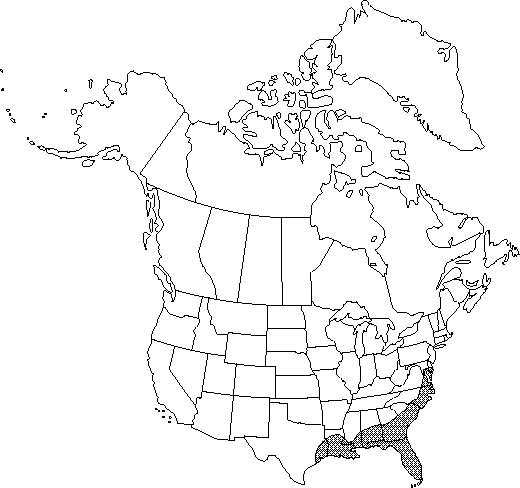Difference between revisions of "Persea palustris"
Bot. Gaz. 67: 229. 1919.
Common names: Swamp red bay
Basionym: Tamala palustris Rafinesque Sylva Tellur., 137. 1838
Synonyms: Persea borbonia var. pubescens (Pursh) Little Persea pubescens (Pursh) Small Tamala pubescens
Treatment appears in FNA Volume 3.
imported>Volume Importer |
imported>Volume Importer |
||
| Line 64: | Line 64: | ||
|publication year=1919 | |publication year=1919 | ||
|special status= | |special status= | ||
| − | |source xml=https:// | + | |source xml=https://bitbucket.org/aafc-mbb/fna-data-curation/src/2e0870ddd59836b60bcf96646a41e87ea5a5943a/coarse_grained_fna_xml/V3/V3_1121.xml |
|genus=Persea | |genus=Persea | ||
|species=Persea palustris | |species=Persea palustris | ||
Latest revision as of 21:46, 5 November 2020
Trees, to 15(-20) m. Branches pubescent, hairs erect, crisped. Leaf blade ovate to elliptic, 8-14 × 2-5 cm; surfaces abaxially pale, glaucous, densely pubescent when young with rusty brown, erect, crisped hairs, glabrescent with age, adaxially green, lustrous. Inflorescences: peduncle longer than subtending leaf petiole, pubescent. Drupe ca. 8 mm wide. 2n = 24.
Phenology: Flowering spring–early summer.
Habitat: Primarily in wetlands but not restricted to them, swamps, marshes, low pinewoods, savannas, maritime forests (sometimes mixed with P. borbonia)
Elevation: Atlantic and Gulf coastal plains, less common in the Piedmont; 0-185 m
Distribution

Ala., Del., Fla., Ga., La., Md., Miss., N.C., S.C., Tex., Va., West Indies (Bahamas).
Discussion
Selected References
None.
Lower Taxa
None.